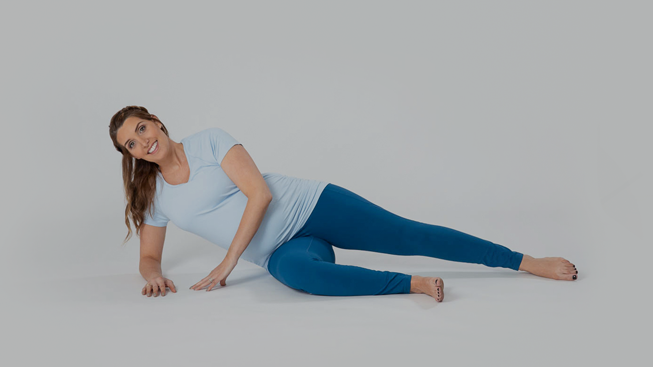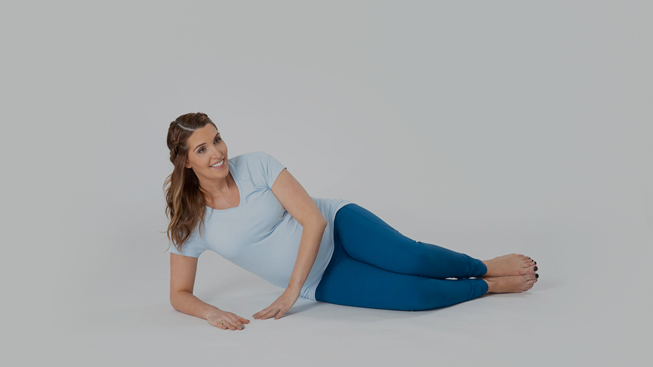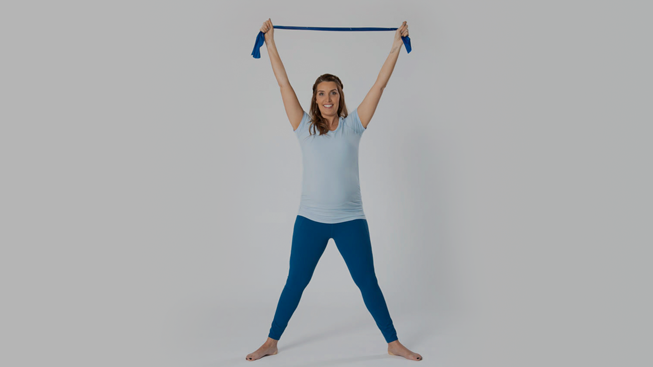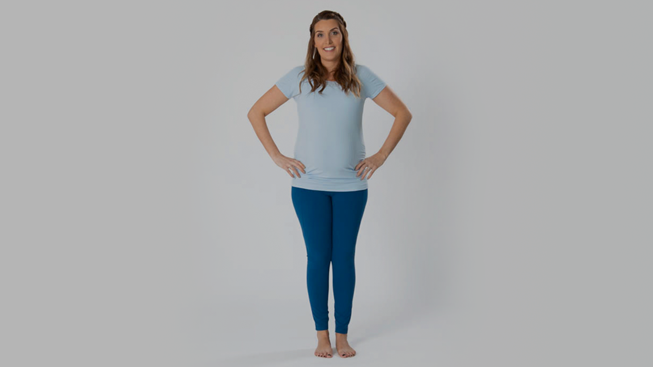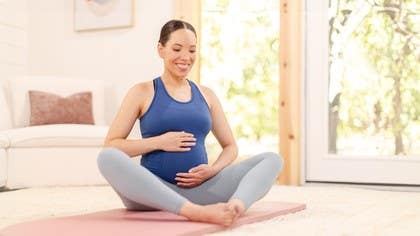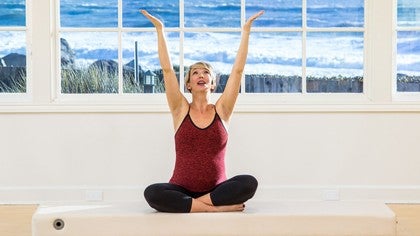Prenatal Pilates in the Second Trimester
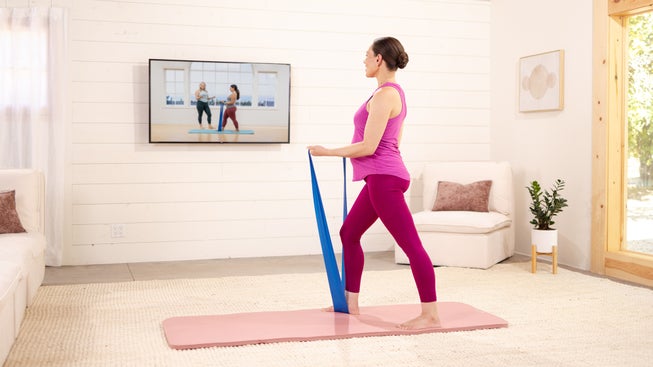
About Pilates in the Second Trimester
Although the fatigue and nausea you’ve been experiencing are (hopefully) starting to wane, your bump is beginning to expand more and more. Your weight and center of gravity are in a state of flux, with the curve of your lower back increasing and your chest possibly moving forward. Decreased balance, endurance, and coordination are common at this stage of pregnancy. The second trimester is also the right time to start making more tangible modifications and adjustments to your workouts, to help support the more sensitive joints of the pregnant body.
What are the benefits of Pilates during the second trimester?
Pilates will help you achieve balanced muscle development as you progress into your pregnancy, and it will increase your stability and body awareness, which is especially important at a time when the body is changing at such a rapid rate. The deep breathing in Pilates will help with stress and anxiety management while serving as a useful tool during childbirth later on.
Is Pilates safe during the second trimester?
Prenatal Pilates is not only safe now, it’s recommended because of the method’s adaptable nature. Whether you’re working on the Reformer or on the Mat, the Pilates workout can be modified to accommodate how you’re feeling on any given day. Even though you might be feeling more energetic in the second trimester, it’s still important to listen to your body. Don’t feel the need to do Pilates every day. Instead, be mindful and moderate—and don’t push yourself.
Prenatal Pilates Exercises (Second Trimester)
Side Leg Lift
Side Leg Lift
Use this Side Leg Lift exercise to build strength in your hips and shoulder girdle. Repeat on each side.
Clam With Kick
Clam With Kick
This Clam variation is a great exercise to engage your external rotators so you can keep your hips strong. Repeat on each side.
Standing Side Overs
Standing Side Overs
You will mobilize your side body while you strengthen your arms and obliques with the Standing Side Overs. Repeat on each side.
Standing Side Leg Lift
Standing Side Leg Lift
Challenge your balance while strengthening your legs in this Standing Side Leg Lift exercise. Repeat on each side.
5 Pilates Moves for Low Back Pain During Pregnancy
Exercises to Try
Just because you’re noticeably pregnant, doesn’t mean you’re “fragile” or can’t challenge your body with Pilates. The Reformer is an excellent place to safely strengthen and tone your entire body as your belly gets bigger, since the spring tension helps to support your weight against gravity as your muscles are lengthening under load. Whether you choose to do Pilates on the Reformer or on the Mat, which offers similar benefits anywhere, anytime, side-lying exercises, such as Side Planks and the Side-Lying Series, are great choices during pregnancy. Keep in mind that the focus should be on activating the transverse abdominis (the muscles that “corset” your waist) to provide support around your abdomen and protect your back.
Exercises to Avoid
During the second trimester, some pregnant women feel the need to limit supine exercises (those done on your back). When lying on your back, the uterus can compress the inferior vena cava and the aorta, restricting blood flow to the baby and making you feel dizzy. Some expectant women prefer to avoid lying on their belly, too; after all, there’s a baby in there! Other movements to avoid: exercises like the Hundred and the Series of Five, since too much forward flexion (that crunching motion) can cause diastasis recti, where your abdominals split from too much pressure from the uterus or if your abdominal muscles are too strong. Feel free to still do flexion in a seated position, such as with Spine Stretch.
Precautions and Modifications
As the baby grows and your ligaments continue to stretch, be mindful of your range of motion during Pilates, taking care not to overstretch, especially during rotation. Props, such as Stability Balls and Foam Rollers, can help keep things within a safe range. Other support props, such as the Wedge, come in handy for modifying supine work (those done on your back). For standing exercises, use a wider stance to accommodate your belly.
Our Advice
As a general rule, it’s important not to overexert or overheat your body during pregnancy, especially as your baby is getting bigger and taking up more space within your body. Take care not to overwork the pelvic floor, since a too-tight pelvic floor can result in pelvic dysfunction during and after pregnancy. If you’re worried that something might hurt the baby, or might not feel good on your body, tread lightly or avoid it altogether. After all, only you know your body.
Related Articles
Frequently Asked Questions
Can I use the Reformer during the second trimester?
If you're new to Pilates, it’s important to learn the movements and body mechanics before hopping on the Reformer, since the added resistance can be more taxing on the body. However, if the Reformer is already part of your Pilates practice, consider opting for a heavier spring tension during stability exercises and lighter resistance during leg and arm work. Another bonus of the Reformer is that it’s elevated, meaning you won’t have to lower your body to the floor, which can be difficult with an expanding bump.
Can Pilates help relieve common pain issues during the second trimester?
Pilates is one of the best ways to manage and prevent aches and pains now, since the priority is on strengthening the transverse abdominis (your deep abdominals), which will help protect your lower back as your belly expands. The posterior work (aka exercises for your back body) in Pilates will help keep your glutes and hamstrings strong to support your weight and stave off injuries. Pilates’ focus on deep breathing promotes overall well-being.
What other types of exercise are recommended during the second trimester?
In addition to prenatal Pilates, other moderate exercise, such as walking, swimming, and prenatal yoga, are beneficial for the pregnant body. Choose activities that make you feel good, inside and out, taking care not to overexert yourself.
What if Pilates is causing pain or discomfort?
Your body is changing, which means your alignment needs to change, too. Consult a qualified Pilates instructor, who can provide any appropriate modifications.
Your Pilates Anytime Membership Benefits
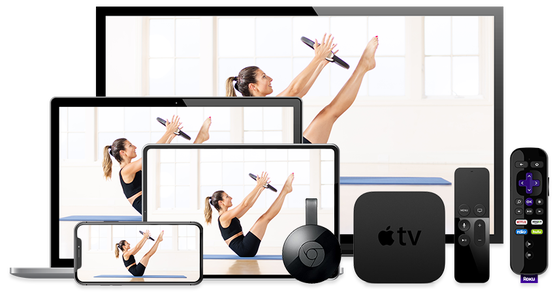
- 15-Day Free Trial
- Unlimited Access to Thousands of Classes
- 95+ Pilates Programs and Challenges
- No Ads
- New Videos Weekly
- Available on All Your Favorite Devices
